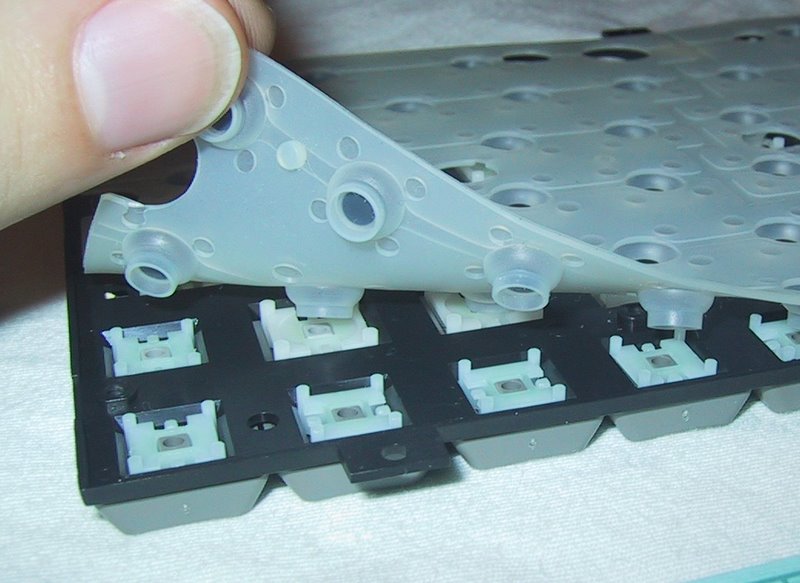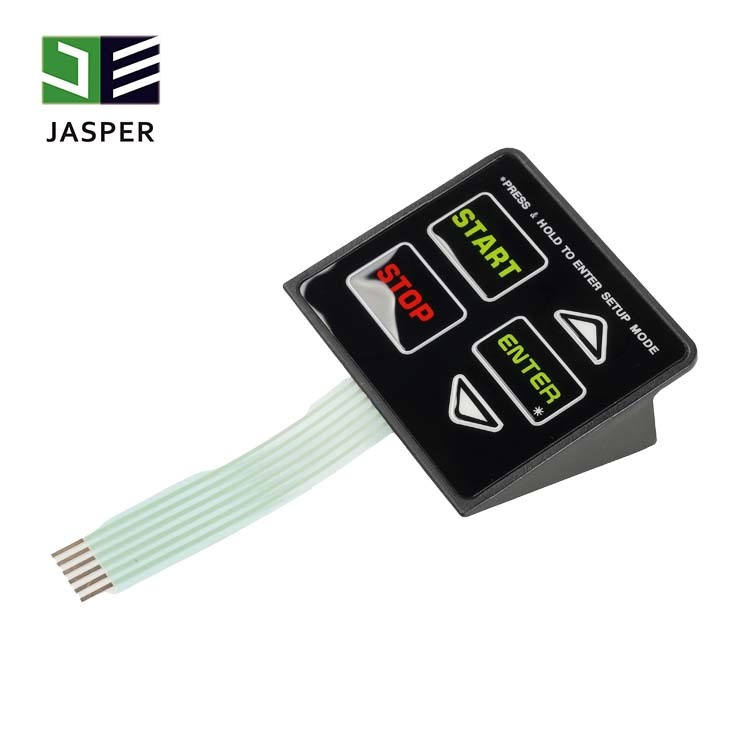Understanding the Significance of Membrane Switch in Modern Electronic Devices and Their Applications
Membrane switches over work as a vital element in contemporary electronic devices, supplying an efficient user interface for customer communication. Their light-weight and adjustable nature makes them ideal for a variety of applications across varied sectors. Comprehending their vital elements and benefits can supply insights into their growing importance. As technology remains to advancement, the advancement of Membrane switches over elevates inquiries regarding their future applications and style technologies. What lies in advance in this vibrant field?

What Are Membrane Buttons?
Membrane switches are essential parts in contemporary electronics, offering as interface that help with interaction between tools and individuals. These switches include a number of layers, consisting of a graphic overlay, an adhesive layer, and a circuit layer, every one of which work with each other to produce a useful and durable user interface. The design enables a level, inconspicuous solution that can be personalized concerning dimension, shape, and aesthetic look, making them ideal for various applications, from consumer electronic devices to medical gadgets. The tactile responses supplied by Membrane switches over improves user experience, while their resistance to dirt and dampness makes them optimal for challenging settings. Membrane buttons can incorporate features such as backlighting and published graphics, additionally increasing their functionality. Their flexibility and effectiveness make them a preferred choice in sectors where dependability and simplicity of use are vital, eventually adding to the smooth operation of contemporary digital tools.
Key Components of Membrane Switches Over
While numerous parts add to the performance of a membrane button, three key layers play substantial roles in its layout and operation. The leading layer, commonly made from a long lasting polymer, works as the interface for user communication, often featuring printed graphics and symbols. Below this is the spacer layer, which maintains the necessary range in between the top layer and the circuit layer. This spacer layer assurances that the switch triggers only when pressed, stopping accidental inputs. The circuit layer includes conductive traces that finish the electrical circuit when the leading layer is depressed. These traces can be made from various materials, including copper or silver. With each other, these elements create a dependable and robust device that is portable and versatile, ideal for a wide variety of digital applications, from home appliances to clinical tools. Recognizing these crucial parts is vital for valuing the overall functionality of Membrane switches.
Benefits of Utilizing Membrane Changes

Membrane Switch Manufacturing Refine
Recognizing the Membrane button production process exposes the elaborate steps associated with creating these vital parts. The procedure typically starts with the layout phase, where specifications and designs are created utilizing specialized software program. Following this, the graphic overlay is printed on a flexible substratum, typically making use of high-resolution printing techniques to guarantee clarity and precision.Next, the adhesive layers are used, which serve to bond the different elements together. The circuit layers, made from conductive inks or products, are then printed onto a separate substrate. These layers are very carefully aligned and laminated flooring to develop a useful switch.After setting up, the switches go through checking to verify functionality and resilience. Quality assurance measures are applied throughout the Visit Website procedure to identify and fix any issues. Lastly, the finished Membrane switches are packaged and gotten ready for distribution, all set to satisfy the demands of contemporary digital applications.
Applications of Membrane Switches Over in Various Industries
Membrane switches are increasingly made use of throughout different industries, especially in clinical devices and consumer electronics. In the medical area, they offer trusted control interfaces for tools that call for precise operation. Likewise, in consumer electronics, these switches improve user communication by supplying receptive and smooth user interfaces.
Medical Devices Control
Many modern medical gadgets make use of Membrane buttons for structured procedure and enhanced customer communication. These switches provide a dependable, resilient interface for a selection of applications, consisting of analysis equipment, patient surveillance systems, and surgical tools. Their personalized designs enable details designs that can suit the unique needs of medical care specialists, ensuring user-friendly navigating and effective access to vital features. Furthermore, Membrane buttons are resistant to pollutants, making them suitable for sterile atmospheres. The tactile feedback they provide can enhance customer self-confidence, reducing the risk of mistakes throughout crucial clinical procedures. On the whole, the assimilation of Membrane switches in clinical equipment substantially adds to boosted functional efficiency and patient security in health care setups.
Customer Electronic Devices Interfaces
In the domain name of consumer electronic devices, Membrane buttons play an essential duty in boosting individual interfaces throughout a large range of devices. These switches are integral to products such as remote controls, microwaves, and gaming consoles, supplying a effective and easy to use interface. Their layout enables for a smooth integration of graphics and capability, making it possible for producers to develop streamlined, modern aesthetic appeals without endangering use. Membrane switches are likewise understood for their durability, typically standing up to comprehensive use and exposure to numerous ecological conditions. Furthermore, they can integrate features like backlighting and tactile responses, further improving the individual experience. As consumer needs for sophisticated yet intuitive interfaces expand, Membrane switches over proceed to be a crucial element ahead of time electronic gadget capability.
Style Considerations for Membrane Switches Over
Creating reliable Membrane changes requires cautious interest why not try this out to different variables that affect both performance and individual experience. One important factor to consider is the choice of materials, as they can impact sturdiness, responsive feedback, and aesthetic appeal. Choosing a suitable adhesive is necessary for assuring long-lasting bond and resistance to environmental factors.In enhancement, the format and design of the button should fit user interaction, with switch sizes and spacing enhanced for ease of use. The consolidation of graphics and labeling must prioritize clearness and presence under various illumination conditions.Consideration of electrical qualities, such as actuation force and switch sensitivity, will enhance the responsiveness of the Membrane switch. The layout should suit manufacturing procedures to guarantee cost-effectiveness and prompt production. On the whole, a well-thought-out design enhances both the user and the functionality experience of Membrane switches in modern-day electronics.

Future Trends in Membrane Switch Innovation
As technology remains to evolve, Membrane buttons are poised to integrate brand-new innovations that will certainly boost their capability and application in numerous areas. One substantial fad is the incorporation of adaptable and long lasting products, which will raise the lifespan and reliability of these switches. Improved surface structures and personalized graphics are likewise expected, permitting for more intuitive individual interfaces.Moreover, the integration of clever innovation, such as touch-sensitive surface areas and haptic responses, is expected to boost user communication, making Membrane changes more receptive and appealing. Additionally, breakthroughs in printed electronic devices will allow much more intricate wiring within thinner profiles, even more broadening layout possibilities.Sustainability will also play an important role in future developments, as suppliers discover environmentally friendly products and manufacturing procedures. In general, these trends will certainly assure that Membrane switches stay essential and appropriate in an interconnected and significantly electronic world.
Often Asked Inquiries
How Do Membrane Switches Compare to Standard Mechanical Switches?
Membrane switches offer advantages over standard mechanical switches, consisting of minimized size, lighter weight, and boosted longevity. They typically provide a sealed surface area, improving resistance to dust and dampness, making them perfect for diverse applications.
What Products Are Commonly Made Use Of in Membrane Switch Building And Construction?

Can Membrane Switches Over Withstand Extreme Environmental Conditions?
Membrane buttons can endure severe ecological conditions, depending upon their style and products. Top notch constructions typically include toughness versus temperature fluctuations, humidity, and exposure to chemicals, making them appropriate for numerous requiring applications throughout industries.
The Length Of Time Do Membrane Switches Commonly Last Prior To Failing?
Membrane switches normally exhibit a life expectancy ranging from 1 to 10 million actuations, depending on variables such as usage regularity, environmental conditions, and manufacturing quality. Regular maintenance can expand their toughness and functional integrity substantially.
Are Membrane Switches Over Personalized for Details Applications?
Membrane switches are without a doubt personalized for particular applications. They can be customized in dimension, performance, and design, enabling manufacturers to meet special user needs and boost product aesthetics while maintaining operational effectiveness and longevity. Membrane buttons are necessary elements in contemporary electronics, serving as individual interfaces that assist in communication in between tools and users. The responsive comments supplied by Membrane switches enhances user experience, while their resistance to dirt and dampness makes them optimal for click challenging atmospheres. The unification of graphics and labeling must focus on clearness and presence under numerous lights conditions.Consideration of electric features, such as actuation pressure and switch level of sensitivity, will certainly enhance the responsiveness of the Membrane switch. Improved surface textures and adjustable graphics are likewise expected, allowing for more intuitive user interfaces.Moreover, the combination of wise technology, such as touch-sensitive surface areas and haptic responses, is expected to boost individual communication, making Membrane switches extra engaging and responsive. Membrane switches deal advantages over traditional mechanical buttons, consisting of minimized dimension, lighter weight, and enhanced longevity.